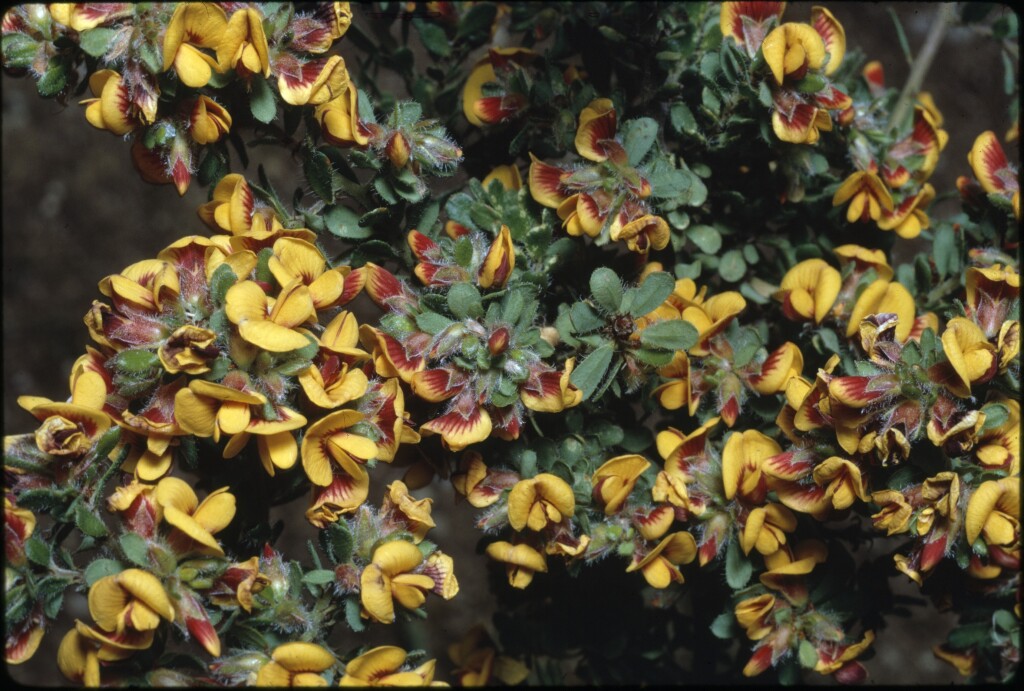Pultenaea hispidula
R.Br. ex Benth. Rusty Bush-peaSpreading shrub to c. 1 m high; branches usually arched; stems terete, densely covered with a mixture of long and short hairs; leaves alternate, oblong-elliptic or obovate, 4–8 mm long, 0.7–3 mm wide; apex acute but not pungent; upper surface with a few scattered hairs, paler than lower; lower surface scabrous, usually hairy, occasionally both surfaces glabrous; margin incurved; stipules lanceolate, 1–2 mm long, partially united, apex slender, recurved. Flowers axillary, 2–5 clustered towards tips of short lateral branches; bracts absent but stipules of floral leaves enlarged; calyx 3–5.5 mm long, variably hairy, rarely glabrous, occasionally viscid; pedicel usually with dense, erect hairs; bracteoles attached at base of calyx tube, broadly ovate to narrowly lanceolate, occasionally stipular and apparently 3-lobed from base; standard 6–10 mm wide; ovary and lower half of style hairy. Pod ovate, inflated, lower half enclosed by calyx. Flowers Sep.–Dec.
LoM, Wim, GleP, Brid, VVP, VRiv, GipP, OtP, Gold, CVU, GGr, DunT, EGL, EGU, WPro, HSF, HNF, OtR, Strz, VAlp. Also SA, NSW. Locally common in dry and moist forest, and occasionally heathlands south of the Great Dividing Range, including Lower Glenelg forests, Grampians, Dandenong Ranges and East Gippsland.
Pultenaea hispidula is extremely variable and includes many forms that in the past have been recognised as distinct species (P. recurviflora H.B.Will., P. readeriana H.B.Will., P. pubescens H.B.Will.); taken in isolation, the these taxa appear distinctive, but they are linked by a wide range of intermediate forms. Populations from the southern Grampians are notable for their broad, almost flat leaves, dark stipules and richly coloured flowers, and were included in Williamson's concept of P. readeriana. Both P. recurvifolia and P. pubescens were based on short-, narrow-leaved forms from the Portland-Nelson area. Further study may justify recognizing some of the variants as distinct taxa.
Corrick, M.G. (1996). Pultenaea. In: Walsh, N.G.; Entwisle, T.J., Flora of Victoria Vol. 3, Dicotyledons Winteraceae to Myrtaceae, pp. 765–793. Inkata Press, Melbourne.
 Spinning
Spinning

